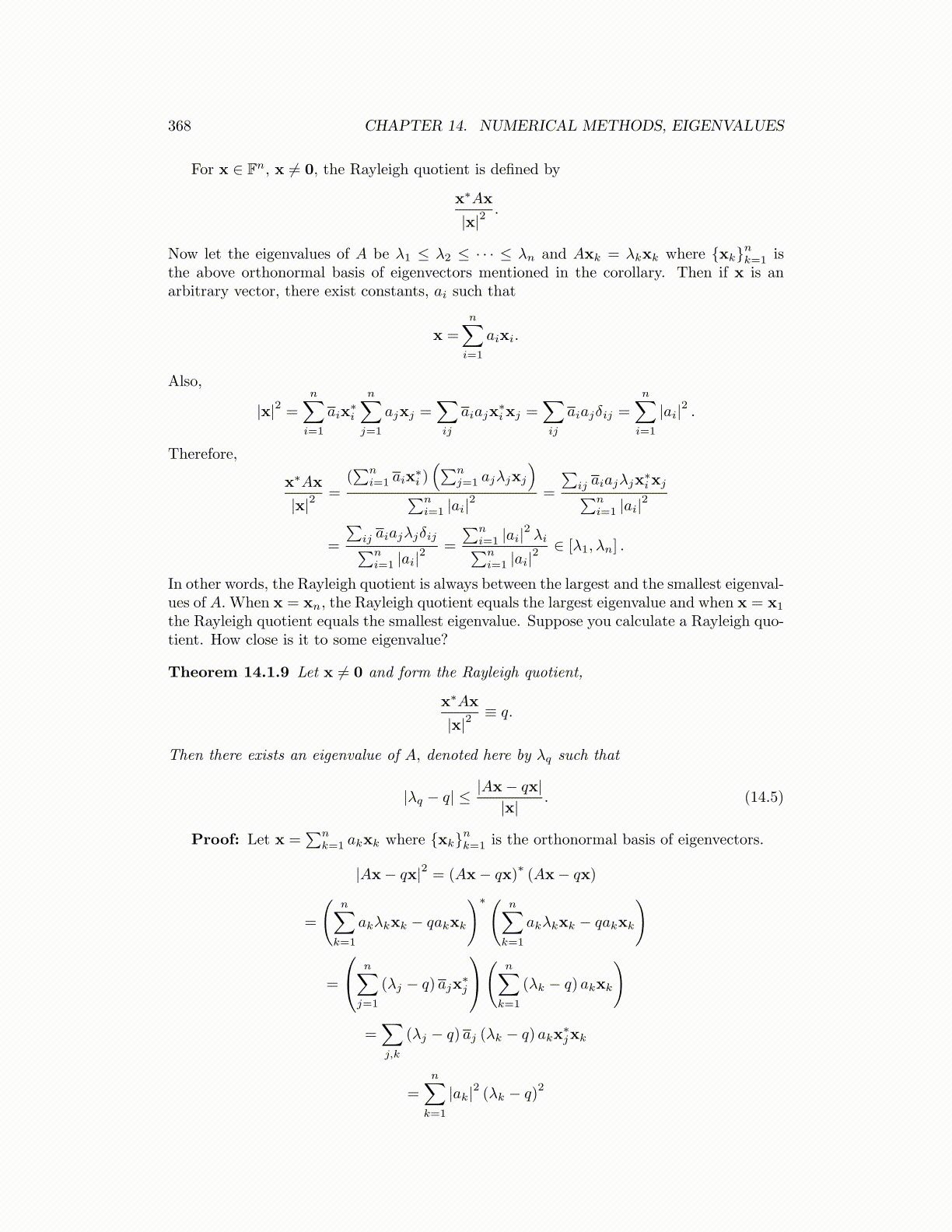
368 CHAPTER 14. NUMERICAL METHODS, EIGENVALUES
For x ∈ Fn, x ̸= 0, the Rayleigh quotient is defined by
x∗Ax
|x|2.
Now let the eigenvalues of A be λ1 ≤ λ2 ≤ · · · ≤ λn and Axk = λkxk where {xk}nk=1 isthe above orthonormal basis of eigenvectors mentioned in the corollary. Then if x is anarbitrary vector, there exist constants, ai such that
x =
n∑i=1
aixi.
Also,
|x|2 =
n∑i=1
aix∗i
n∑j=1
ajxj =∑ij
aiajx∗ixj =
∑ij
aiajδij =
n∑i=1
|ai|2 .
Therefore,
x∗Ax
|x|2=
(∑n
i=1 aix∗i )(∑n
j=1 ajλjxj
)∑n
i=1 |ai|2 =
∑ij aiajλjx
∗ixj∑n
i=1 |ai|2
=
∑ij aiajλjδij∑n
i=1 |ai|2 =
∑ni=1 |ai|
2λi∑n
i=1 |ai|2 ∈ [λ1, λn] .
In other words, the Rayleigh quotient is always between the largest and the smallest eigenval-ues of A.When x = xn, the Rayleigh quotient equals the largest eigenvalue and when x = x1
the Rayleigh quotient equals the smallest eigenvalue. Suppose you calculate a Rayleigh quo-tient. How close is it to some eigenvalue?
Theorem 14.1.9 Let x ̸= 0 and form the Rayleigh quotient,
x∗Ax
|x|2≡ q.
Then there exists an eigenvalue of A, denoted here by λq such that
|λq − q| ≤ |Ax− qx||x|
. (14.5)
Proof: Let x =∑n
k=1 akxk where {xk}nk=1 is the orthonormal basis of eigenvectors.
|Ax− qx|2 = (Ax− qx)∗(Ax− qx)
=
(n∑
k=1
akλkxk − qakxk
)∗( n∑k=1
akλkxk − qakxk
)
=
n∑j=1
(λj − q) ajx∗j
( n∑k=1
(λk − q) akxk
)
=∑j,k
(λj − q) aj (λk − q) akx∗jxk
=
n∑k=1
|ak|2 (λk − q)2